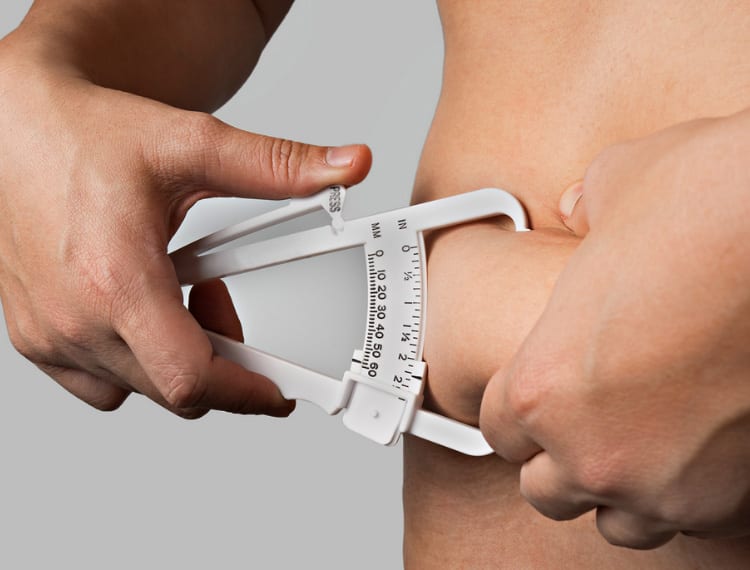
If you think you need to lose weight, think again – you don’t! What you really need to lose is fat!
Getting into great shape and being healthier means changing your body composition – reducing your body fat and increasing muscle mass. Once you make that mind-shift you’ll quickly see that your weight on the scale is not a reliable indicator of progress.
The best way to measure and track your body composition is with a DEXA scan, which is a medical-grade low-dose X-ray scan of your entire body. DEXA’s position as the ‘gold standard’ for tracking changes in body fat and muscle mass is why it’s recommended by the likes of UK fitness guru Dr Michael Mosley, author of bestseller ‘Outlive’ Dr Peter Attia, and Tim Ferris of ‘The 4-Hour Body’ fame.
DEXA accurately measures your total amount of fat and lean body mass so you know precisely (to the gram) where you’re starting from and can set precise, realistic targets for both fat-loss and muscle-gain. DEXA could reveal that you need to put on more muscle than you need to lose fat, in which case your objective is weight-gain, not weight-loss!
As well as precision, DEXA delivers a vast array of comprehensive, meaningful data rather than the single-number output of most measurement devices, such as weight, BMI or body fat percentage. DEXA gives you all these and many, more-meaningful metrics that isolate your fat and lean mass and account for your height (a key factor in how much fat and muscle you carry).
Among those metrics are your fat distribution. Whilst you cannot spot-lose fat (your genetics will decide where you lose the fat first and last) knowing your fat pattern will help you be realistic about when you will see your abs or shift that stubborn fat from your hips.
Before you start your journey, you need to know that the fundamental principle of weight-loss is that you must be in a sustained energy (calorie) deficit over time. In other words, you must ‘eat below maintenance’, where ‘maintenance’ is the number of calories that will keep your weight the same. Put another way, ‘calories in’ must be less than ‘calories out’.
DEXA starts your fat-loss journey off on the right foot by giving you a much more reliable measure of your maintenance calories than traditional formulae that use your weight as an input.
That means you can confidently establish your maintenance calories, a daily deficit and calorie total and a precise timeline to lose your target amount of body fat.
Having a specific fat-loss goal, periodic milestone targets and overall duration will make it easier to stay on track, keep realistic expectations and ultimately reach your goal.
Regular DEXA scans to monitor progress will keep you motivated if things are going well or enable you to course-correct if things are not going to plan. And remember, your weight on the scale can give a misleading picture of what is going on. The DEXA scan extract below shows the changes in fat and lean (muscle) mass for a man who intended to lose body fat but whose weight went up by about a kilogram. On the face of it – and on the scale – a bad and demotivating result. But the DEXA scan reveals that he did indeed lose fat (1.3kg) but also gained muscle (2.4kg). An excellent result and a total change in body composition of 3.7kg.
One of DEXA’s great strengths is its consistency between scans, meaning that even very small changes in body fat are faithfully recorded – DEXA doesn’t lie! This is in contrast to other methods for measuring body fat, such as bio-impedance devices and skinfold calipers, which are significantly affected by, respectively, hydration levels and human error.
Bio-impedance and calipers also suffer from completely ignoring the fat which is of greatest risk to your health and could be the biggest motivator for you to lose weight – visceral fat.
Visceral fat is the fat around your organs (liver, pancreas, heart, lungs) which accumulates after your subcutaneous (under-skin) fat stores reach a given limit. Visceral fat is associated with life-changing diseases such as type-2 diabetes, heart disease, stroke, cancer and Alzheimer’s.
DEXA’s low-dose X-ray reveals this internal fat, whereas bio-impedance scales ignore the upper half of your body and skinfold calipers only measure subcutaneous fat. Many people who have a DEXA scan are surprised by their high levels of visceral fat, usually because they are slim or not overweight. But the scan could show that you do, in fact, have fat to lose – invisible, internal fat that is a risk to your health.
Conclusion
Any plan to get in shape should focus not on weight but on its two entirely separate components – fat and muscle. Measuring your body composition accurately and consistently with DEXA scans every three months will enable you to establish your body composition goals, set an achievable target, calorie target and timeline. Changes (or no change) in scale weight, which can be dispiriting, may hide success that only DEXA can reveal. These improvements will keep you motivated and on track as you move towards your goal.


















Follow Us